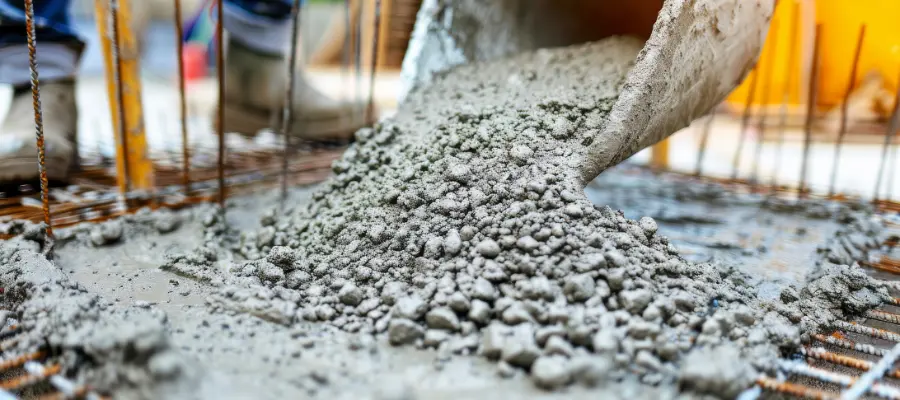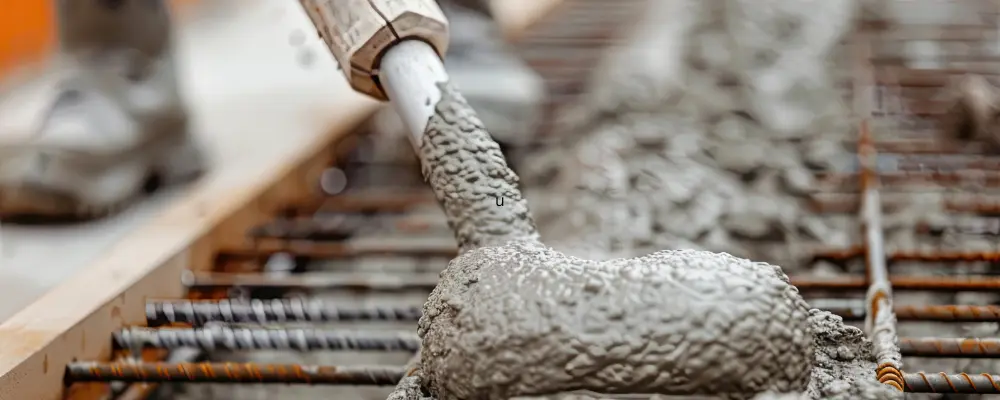Concrete is one of the most commonly used materials in the construction of modern homes, especially in India. Since its invention in the early 19th century, there have been many technological advances that have helped in increasing its quality. Admixtures constitute one such technology that is frequently used in home construction. Read on to learn more about what an admixture is and what its types are.
What is an Admixture?
Concrete is generally composed of cement, sand and aggregates in different proportions to create different grades. An admixture is an element other than these, which is added to concrete to enhance its properties such as workability, increase or decrease in setting time, durability, etc.
Inclusion of an admixture in a concrete mix allows builders to customise it based on specific site requirements. It can be added before mixing concrete or while mixing it or even during the setting stage, depending on the function it is required to perform.
The quantity of an admixture in a concrete mix is generally small and typically ranges from 0.5% to 5% of the cement mass in the mix.
Types of Admixtures in Concrete
Different types of admixtures are used to provide different benefits and ways to enhance concrete quality, workability and durability, based on specific requirements. A concrete admixture can be broadly categorised into the following categories.
- Chemical Admixtures
- Mineral Admixtures
1. Chemical Admixtures
These are water-soluble elements that can be in powdered or liquid forms and are generally added before or during the preparation of a concrete mix. A chemical admixture is usually used in smaller quantities that make up a very small percentage of the overall mix. The following are the various types of chemical admixtures available in the market today, which can be used for different purposes as required.
- Retarders
A retarder is an admixture included in the concrete mix to delay the time taken by concrete to set. In hotter climates, concrete undergoes a faster setting. Retarders aid in cooling down the concrete temperature, thus increasing its setting time and ensuring better finishing.
- Accelerators
Accelerators are used to decrease the setting time of concrete, especially in colder climates where the process can take longer. They help in speeding up the construction process with higher early concrete strength. However, these must be used in moderation, to avoid shrinkage and loss in concrete strength.
- Water Reducing Admixtures/ Plasticisers
As the name suggests, water-reducing admixtures are utilized to reduce the amount of water in a cement mix. The amount of water required can generally be reduced by 5% to 10%, but higher-range admixtures or superplasticizers can also reduce this quantity by 30%. This is especially beneficial in areas with low water availability and can also aid in increasing concrete strength.
- Air-entraining Admixtures
The addition of an air-entraining admixture in a concrete mix ensures the entrapment of uniform, stable air bubbles. This reduces friction between cement particles, thus increasing the workability of concrete. It also ensures the impermeability of concrete, leading to increased durability. However, the inclusion of this admixture in higher quantities can lead to a drastic decrease in concrete strength.
- Miscellaneous Admixtures
Apart from the above categories, there are also other admixtures available in the market today, which can be used for purposes such as:
- Hydration control
- Reduction of shrinkage
- Colouring
- Inhibition of corrosion
- Damp-proofing
3. Mineral Admixtures
Mineral admixtures are available in fine powdered forms and are generally made up of waste materials from different industries, which are insoluble in water. They are added in larger quantities to the concrete mix as compared to chemical admixtures and can sometimes even be used to partially replace cement in the mix. These are also available in different types, some of which are explained below.
- Fly Ash
Fly ash is a by-product of thermal power plants, consisting of Silica, Alumina, and Calcium oxides. The use of fly ash in concrete as an admixture increases its workability and setting time. It can also replace a certain quantity of cement in the mix, helping the production of greener concrete with lower shrinkage, and reducing the creep of concrete.
- Silica Fume
This is a by-product of electric arc furnaces that produce silicon-based compounds. As an admixture, it increases the flexural and compressive strength of concrete, while enhancing its resistance to erosion and abrasion. However, its use in a concrete mix highly increases water requirement, which is why it’s almost always used along with a plasticizer.
- Metakaolin
Thermally activated ordinary and kaolin clay is called metakaolin. This mineral admixture reduces the permeability of concrete and increases its resistance to chemical attacks, thus ensuring increased durability. It also helps in the early strengthening and setting of concrete, leading to faster construction.

Benefits of Admixtures in Concrete
As explained in the above sections, admixtures provide various benefits in the use of concrete, which can be summarised as follows:
- Early/ late setting and hardening
- Increased durability
- Enhanced workability
- Increased compressive and flexural strength
- Resistance to environmental factors such as corrosion, chemical attacks, shrinkage and cracking.
- Enhanced finishing
- Speedy construction and lower costs
- Providing color options for finishing
Limitations of Concrete Admixtures
Certain intrinsic properties of admixtures limit their frequent usage in the production of concrete elements, such as:
- Increased cost
- Increased probability of cracks
- Uncalculated quantities of admixtures can result in decreased strength
- Use of poor quality admixtures results in structural defects
Therefore, the inclusion of admixtures in a concrete mix requires careful consideration and study of the properties of each element, along with the environmental conditions of the site. Even slight changes in the quantity of admixtures used can have drastic effects on a structure. Therefore, it is advisable to consult experts such as structural engineers to determine the type, quantity and proportion of admixtures to be used. Contact Brick & Bolt to ensure the usage of the right admixtures to build your dream home today!

